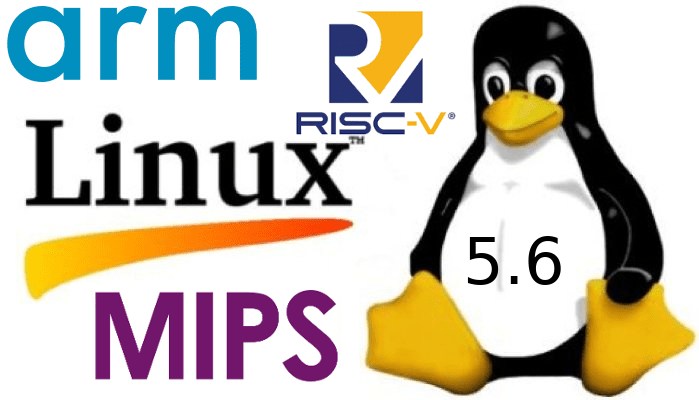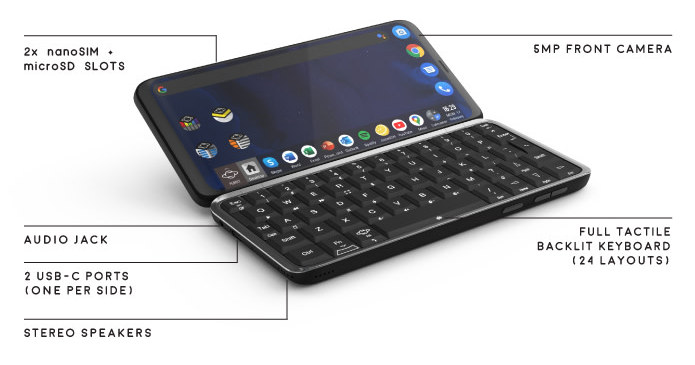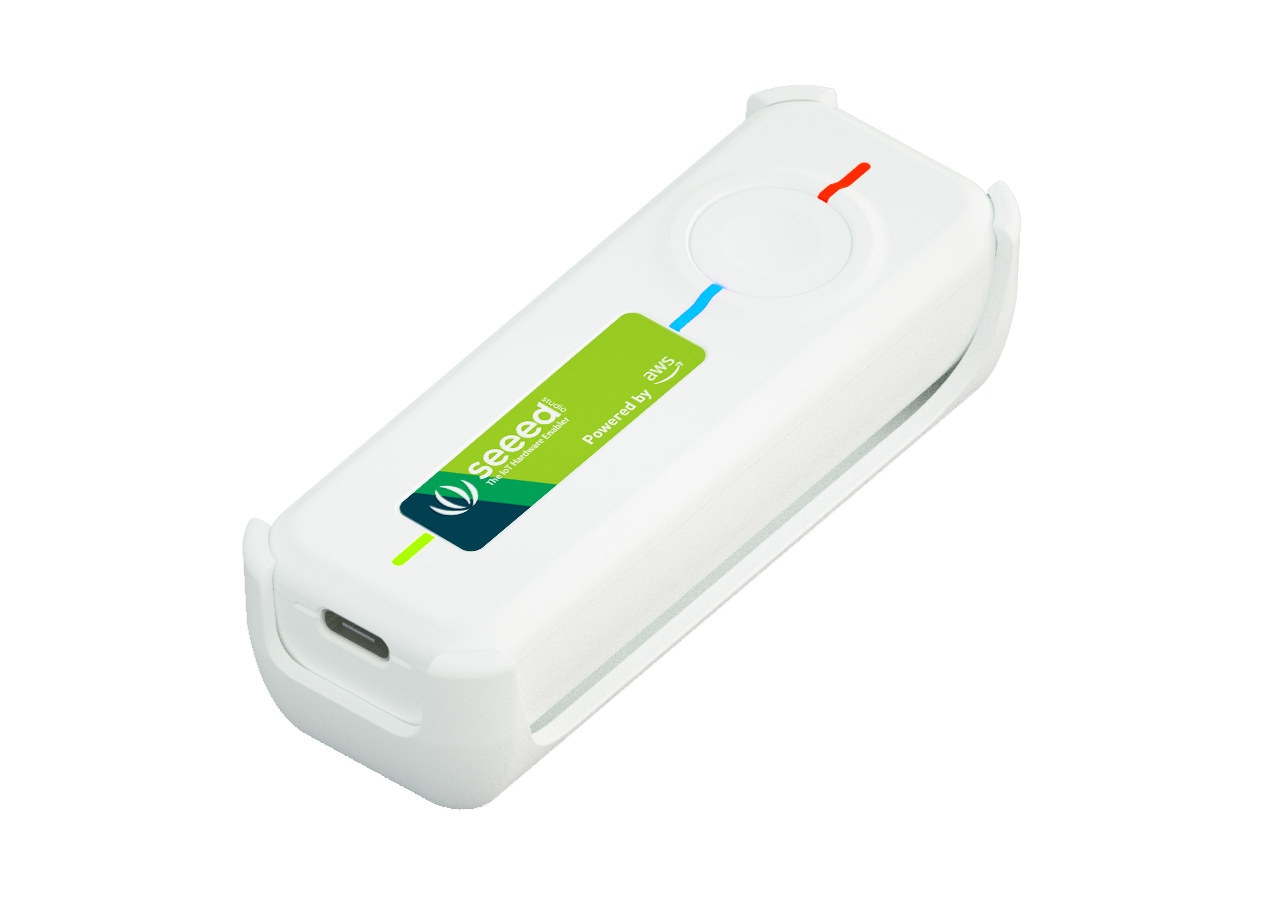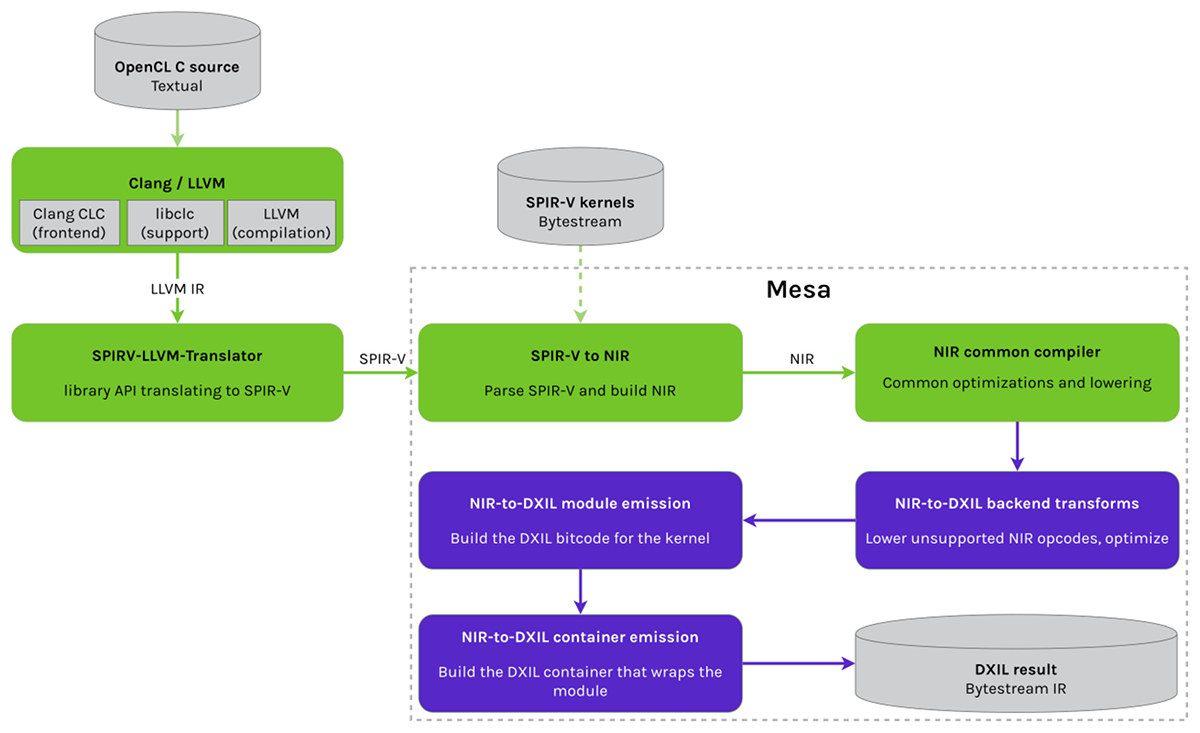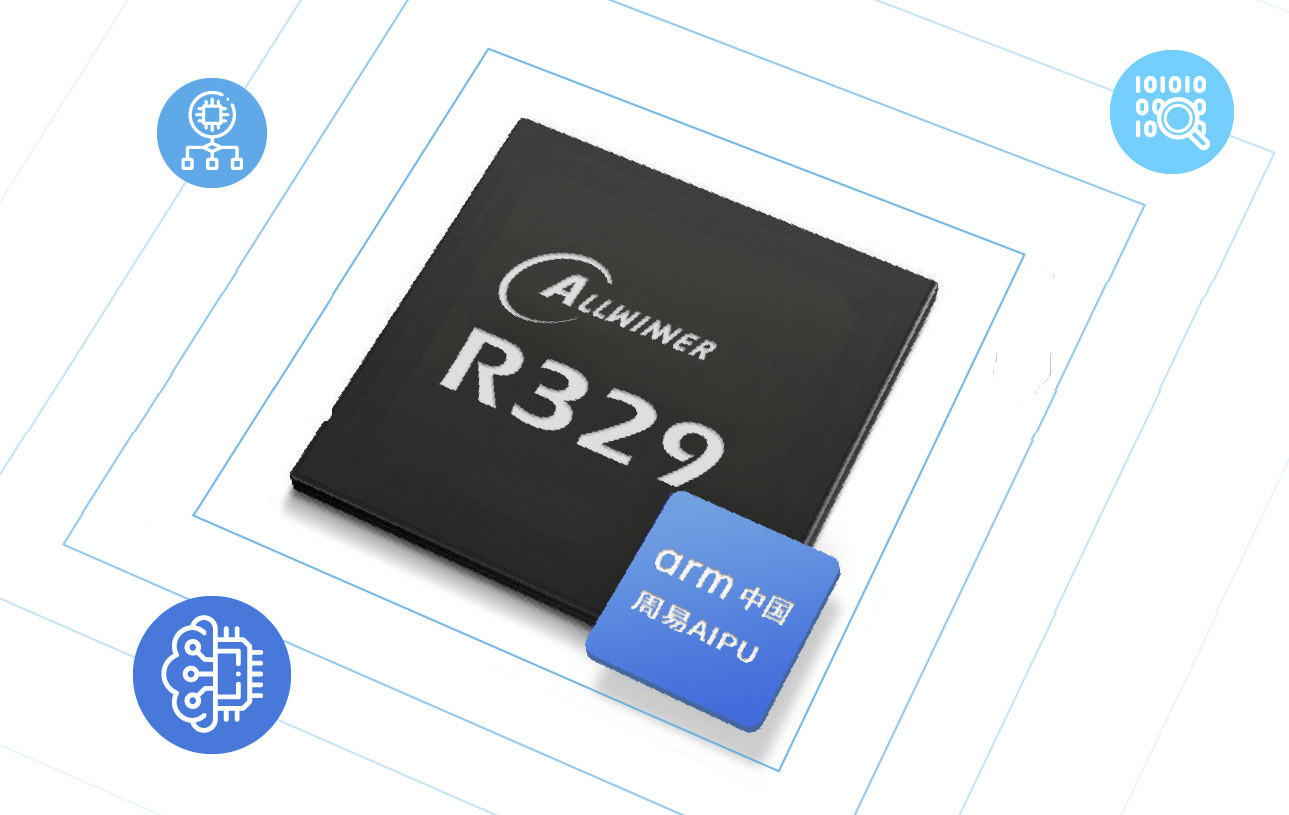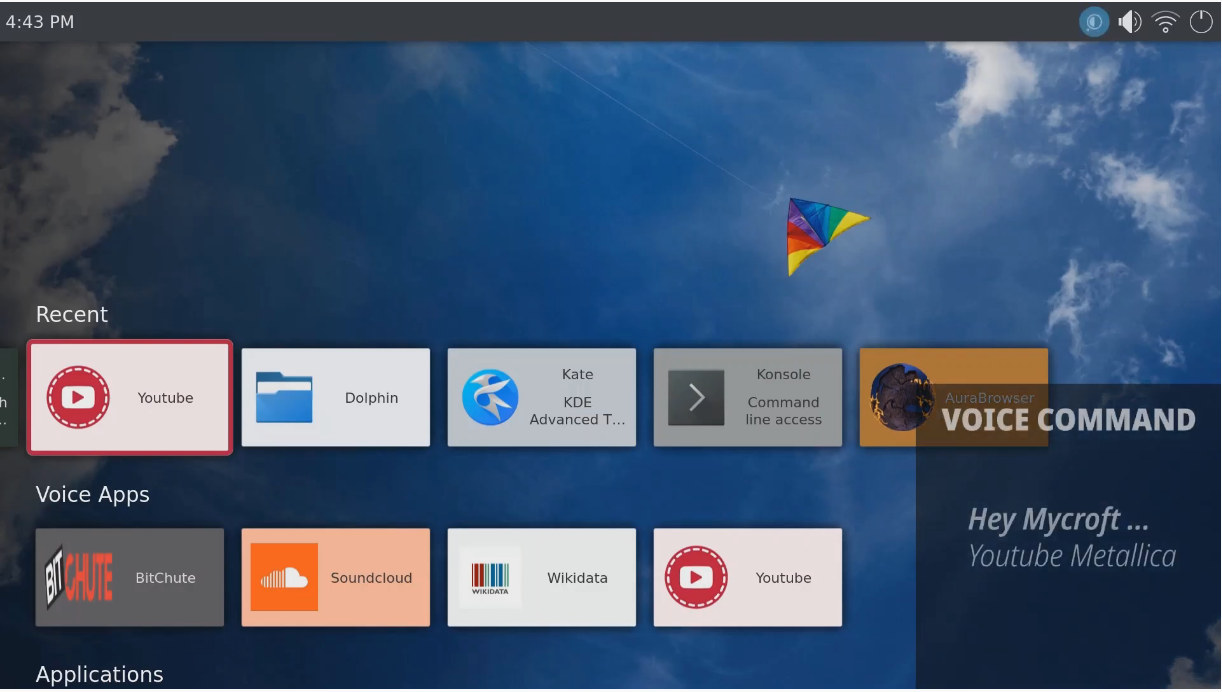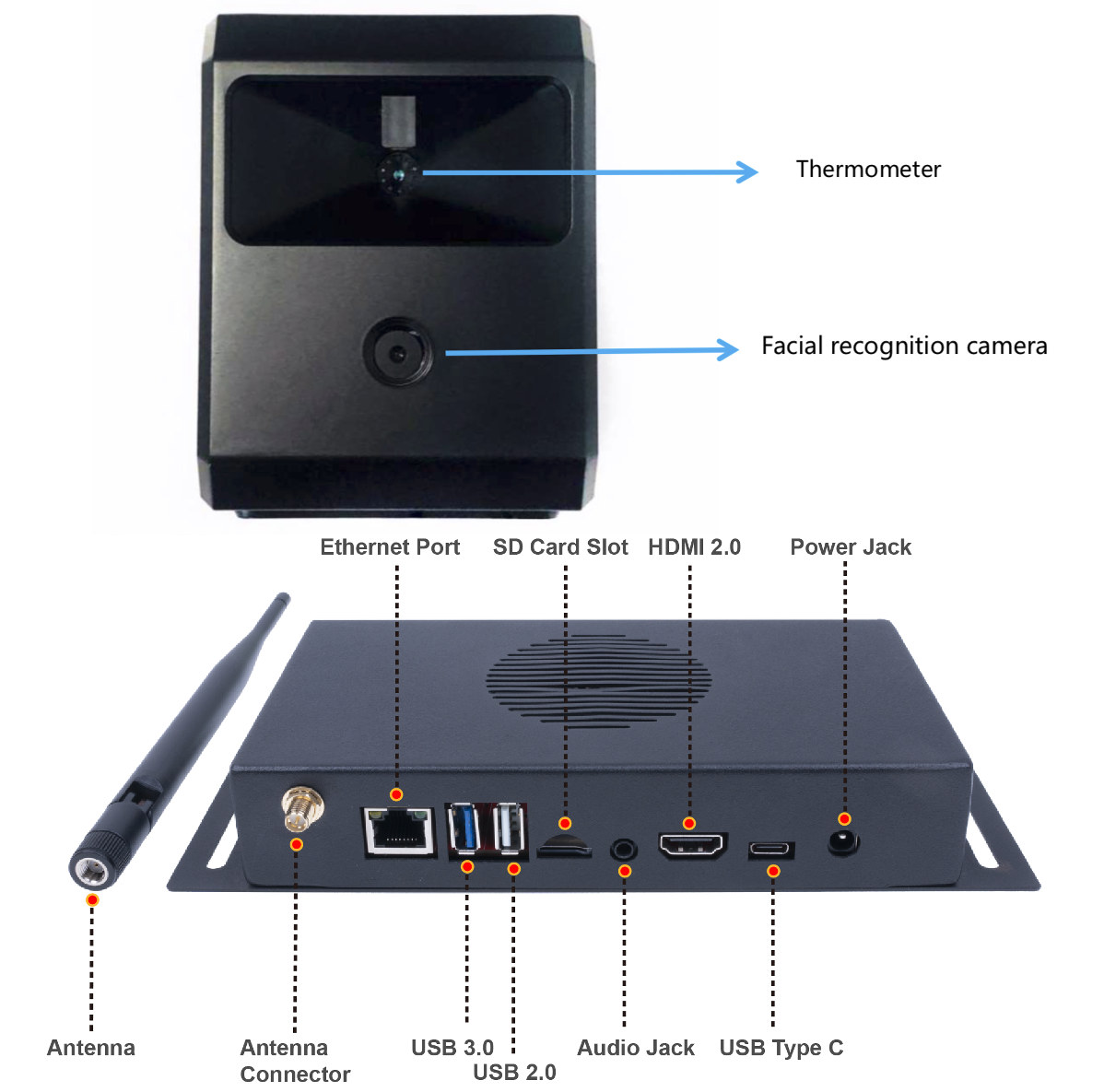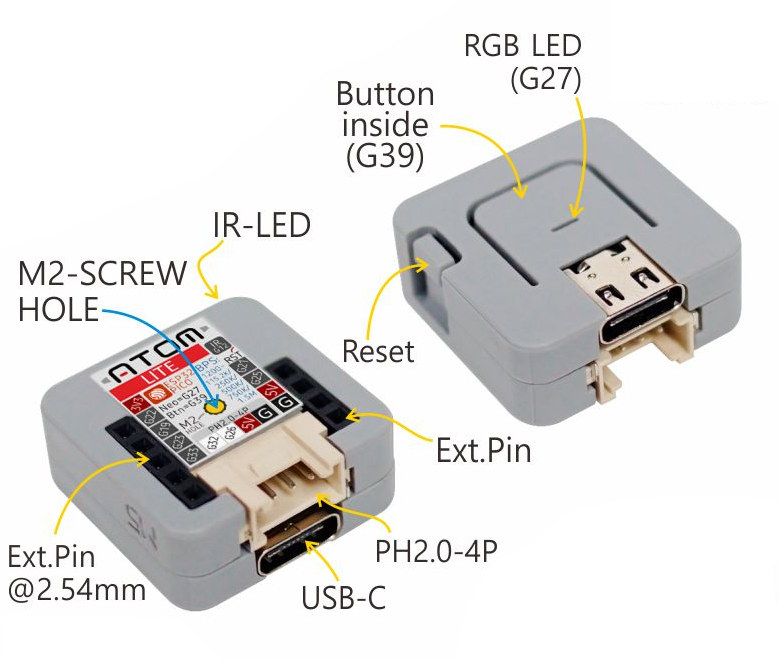Linus Torvalds has just announced the release of Linux 5.6 on the Linux Kernel Mailing List: So I’ll admit to vacillating between doing this 5.6 release and doing another -rc. This has a bit more changes than I’d like, but they are mostly from davem’s networking fixes pulls, and David feels comfy with them. And I looked over the diff, and none of it looks scary. It’s just slightly more than I’d have preferred at this stage – not doesn’t really seem worth delaying a release over. So about half the diff from the final week is network driver fixlets, and some minor core networking fixes. Another 20% is tooling – mostly bpf and netfilter selftests (but also some perf work). The rest is “misc” – mostly random drivers (gpio, rdma, input) and DTS files. With a smattering of fixes elsewhere (a couple of afs fixes, some vm fixes, etc). […]
Astro Slide 5G Transformer Smartphone Comes with a Slide-out Keyboard, MediaTek Dimensity 1000 SoC (Crowdfunding)
Planet Computers has introduced several smartphones with physical keyboards over the last few years including Gemini PDA and Cosmo Communicator with the later recently received its promised Debian Linux images besides just running Android 9.0. The company is now back with the new model. Powered by a MediaTek Dimensity 1000 processor, Astro Slide 5G Transformer supports 5G connectivity and comes with a slide-out keyboard following on the steps of the company’s previous smartphones. Astro Slide 5G Transformer preliminary hardware specifications: SoC- MediaTek Dimensity 1000 (MT6889)octa-core processor with 4x Arm Cortex-A77 cores @ 2.6 GHz, 4x Arm Cortex-A55 CPU efficient cores @ 2.0 GHz, Arm Mali-G77 GPU, 4.5 TOPS APU 3.0 AI accelerator / NPU System Memory – At least 6GB LPDD4x RAM Storage – 128 GB flash, MicroSD card slot Display – 6.53″ touchscreen display with 2340×1080 resolution, scratch-resistant glass Camera – 48MP rear camera with flash, 5.0MP front-facing camera […]
Seeed IoT Button for AWS Brings Back Amazon Dash Button to Life for Developers
Amazon introduced $5 dash buttons in 2015 to let consumers purchase regular items such as washing powder by simply pressing a button. Some people hacked them for other purposes, for instance as WiFi logging buttons, but the company eventually stopped selling the buttons in February 2019 and fully killed those at the end of August. Seeed Studio is bringing back Amazon Dash button to life in some ways, with the Seeed IoT Button For AWS Wi-Fi-based, programmable button that deploys the AWS IoT 1-Click service. Seeed IoT Button for AWS hardware specifications: MCU – Dual-core MCU with 20MHz Cortex M0 and 200MHz Cortex M4F (Very likely Realtek RTL8720DN Wireless MCU) Storage – 4MB flash Connectivity – Dual-band Wi-Fi 4 802.11 a/b/g/n (2.4GHz & 5GHz) and Bluetooth 5.0 LE USB – 1x USB Type-C port for charging Misc – Button good for 100,000 cycles, 3x LEDs (red, green, blue) Power Supply […]
Collabora & Microsoft to Bring OpenCL 1.2 and OpenGL 3.3 to DirectX 12 enabled Windows Devices
Collabora has been working on open-source graphics projects for a while, including Panfrost open-source drivers for Arm Midgard and Bitfrost GPUs which got experimental OpenGL ES 3.0 support earlier this year. But the company has also been working with Microsoft in order to provide an OpenCL 1.2 & OpenGL 3.3 translation layer for Windows devices compatible with DirectX 12. Their solution relies on Mesa 3D OpenCL and OpenGL open-source implementation with three main components: an OpenCL compiler using LLVM and the SPIRV-LLVM-Translator to generate SPIR-V representations of OpenCL kernels. The data goes through an SPIR-V to NIR translator (NIR is Mesa’s internal representation for GPU shaders), and finally to NIR-to-DXIL generating a DXIL compute shader and metadata understood by DirectX 12 (D3D12) a custom OpenCL runtime to do a direct translation of DirectX 12 (Not based on Mesa Clover implementation) a Gallium driver that builds and executes command-buffers on the […]
Allwinner R329 Smart Speaker Processor Features Arm China’s AIPU (Artificial Intelligence Processing Unit)
Allwinner R328 is a dual-core Cortex-A7 processor with 64MB or 128MB built-in RAM designed for low-cost smart speakers that was introduced last year and found into smart speaker sold in mainland China. According to a recent press release (in Chinese only), the company has now released a 64-bit update with Allwinner R329 dual-core Cortex-A53 processor equipped with dual HIFI4 DSP for audio post-processing and pre-processing, as well as Arm China’s AIPU (Artificial Intelligence Processing Unit) delivering up to 0.256 TOPS at very low power. There’s no product page for Allwinner R329 yet, so I extracted some specifications from the press release: CPU – Dual-core Cortex-A53 @ up to 1.5 GHz DSP- Dual-core HIFI4 DSP @ 400 MHz AI Accelerator – Arm China AIPU with 0.256 TOPS Built-in DDR RAM Audio Embedded second-generation VAD hardware 5x audio ADCs 2x audio DACs with 100dB SNR I2S and DMIC controller 5-1-channel and 7.1 […]
KDE Plasma Bigscreen for TVs and TV Boxes Offers a Linux Alternative to Android TV
KDE Plasma is a desktop environment initially developed for Linux Desktop PC or SBCs, but that’s also available on Linux phones with Plasma Mobile (previously known as Plasma Active). The developers have now decided to work on a version for the big screens with Plasma Bigscreen suitable for TVs and TV boxes and offering an open-source, Linux-based alternative o Android TV. Plasma Bigscreen is community supported, completely free and open-source, and offers an interface fairly similar to Android TV launcher. It is optimized for IR remote control use including (experimental) CEC support, as well as voice control through MyCroft open-source AI & voice assistant and Bluetooth or RF remotes with a built-in microphone such as WeChip G20 or W2, or a USB microphone. By default, Plasmas Bigscreen connects to Mycroft’s Home server, which uses Google’s STT (Speech to text) sending anonymized utterances to Google, but it’s also possible to switch […]
This Non-Invasive AI Temperature Screening System Checks Multiple Persons On-the-Fly
Yesterday, I had to go to the bank with the branch located in a building where they closed all doors except one in order to make sure all people were wearing masks, check their temperature, and let them wash hands with alcohol hand gel. Those are good preventive measures to slow the spread of SARS-CoV-2 virus, but in case many people visit a location that’s also time-consuming. I’ve just come across a system that should speed up the process, as it can check forehead temperature of people as they walk by, using a camera and artificial intelligence for face detection, and an IR camera/thermometer to report temperature. Remote AI temperature screening system specifications: SoC/Memory/Storage – Don’t know, but I would not be surprised if it was based on RK3399 since Rockchip often promotes AI use cases for this processor. External Storage – MicroSD card, USB drive Video Output- HDMI 2.0 […]
M5Stack ATOM is a Compact, Fully Integrated ESP32 Development Kit
When working on a project you may need an MCU or MCU board, an external display, a breadboard, and other accessories like sensors and jumper cables. It does the job, but it can be messy. Recently, we wrote about M5Stack M5StickV AI camera, but the company is better known for its ESP32 IoT development kits enabling neater project thanks to hardware that integrates MCU, I/O headers, display, and sensors into an enclosure. Their latest offerings are ATOM series toolkits that come in two versions: ATOM Lite and ATOM Matrix. Let’s have a look at both. M5Stack ATOM Lite Specifications: SiP – ESP32-PICO-D4 system-in-package with ESP32 dual-core processor with WiFi 4 and Bluetooth 5.0/5.1 Storage – 4 MB flash Crystal oscillator and passive components USB – 1x USB Type-C port Expansion 9-pin header with 6 GPIOs compatible with jumper cables 4-pin PH2.0 connector with 2x GPIO, 5V and GND Misc – […]


